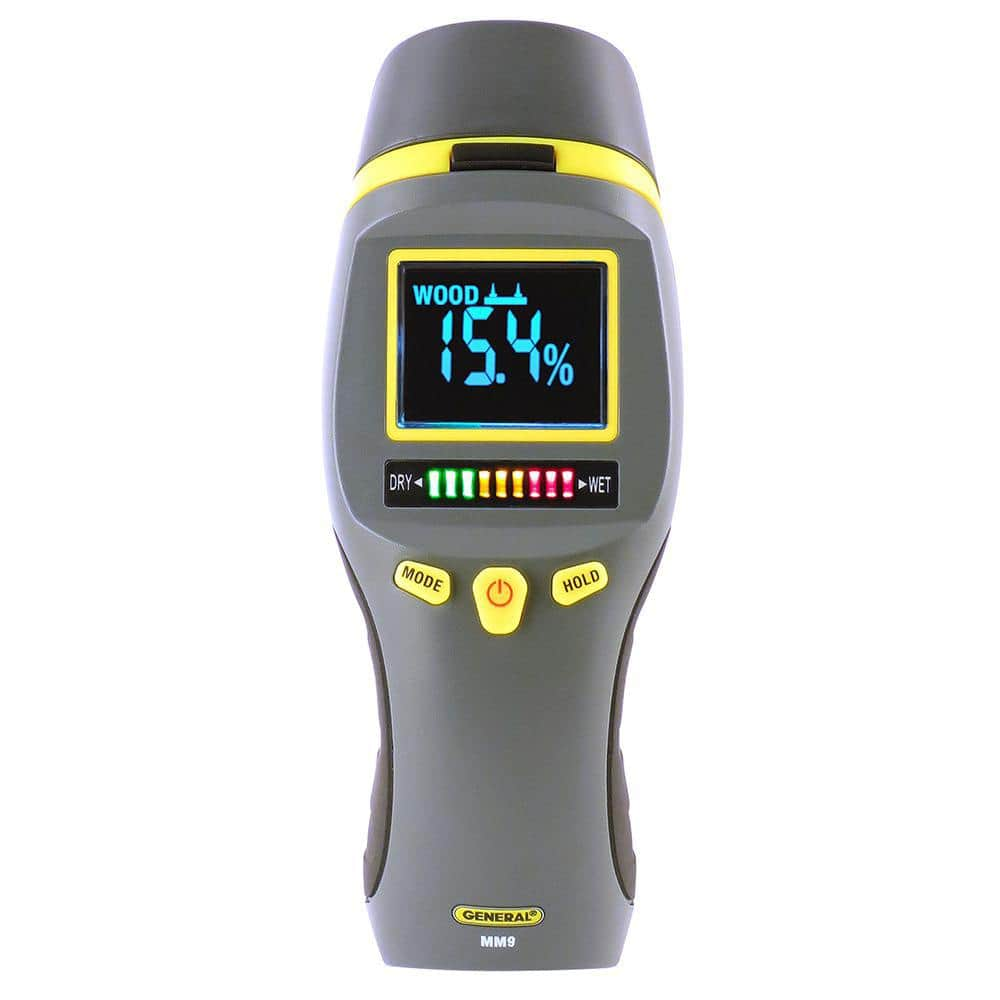The Ultimate Overview to Picking the Right Moisture Meter for Your Needs
The Ultimate Overview to Picking the Right Moisture Meter for Your Needs
Blog Article
Look Into the World of Moisture Meters: Whatever You Required to Know
In the realm of moisture meters exists a globe of precision and functionality that usually goes unnoticed. These gadgets, while apparently straightforward, hold a riches of details that can significantly affect numerous sectors and applications. Understanding exactly how moisture meters run, the various kinds available, and their diverse uses can lose light on their relevance in guaranteeing high quality and performance. By exploring the complexities of wetness meters, one can discover a beneficial device that goes beyond mere measurement, using understandings that can make a considerable difference in numerous areas.
Exactly How Moisture Meters Work
Moisture meters operate by measuring the electric conductivity or capacitance of products to determine the moisture web content existing. These meters are indispensable tools throughout numerous markets, consisting of woodworking, building, and agriculture. By utilizing various techniques such as pinless or pin-type modern technology, dampness meters supply exact readings that assist specialists make informed choices.
Pin-type wetness meters work by inserting the sharp pins into the material being checked. On the other hand, pinless dampness meters utilize electromagnetic signals to scan a bigger location without causing any kind of damages to the product's surface area.
Despite the technique used, wetness meters play a crucial function in preventing concerns such as mold development, architectural damages, or product issues brought on by excess wetness. Comprehending just how these meters work is essential for making sure the high quality and honesty of products in various applications.
Sorts Of Moisture Meters
Offered the critical role moisture meters play in numerous markets, it is necessary to recognize the different kinds offered to professionals for properly examining wetness levels - Moisture Meter. There are mostly two major kinds of moisture meters: pinless and pin-type moisture meters

On the other hand, pinless wetness meters make use of electromagnetic sensing unit plates to scan a bigger location of the material without creating any type of damage. This type is ideal for rapidly scanning big areas and is typically used for floor covering, walls, and ceilings. Pinless meters are practical for taking analyses on finished surface areas without leaving any type of visible marks.
Both sorts of wetness meters have their advantages and are selected based on the particular needs of the job handy. Comprehending the differences in between these types is crucial for specialists to make exact wetness evaluations.
Applications Throughout Industries
Building specialists count on wetness meters to evaluate the dampness levels in structure materials like concrete, drywall, and timber, which is crucial for keeping architectural integrity and protecting against concerns like rot or mold. The floor covering sector makes use of moisture meters to gauge the wetness material in subfloors before mounting here are the findings numerous flooring coverings, avoiding pricey problems due to excess dampness. In the food market, dampness meters are made use of to keep track of and control moisture levels in items such as grains, nuts, and dried out fruits to keep freshness and quality.
Tips for Using Moisture Meters
When determining the wetness content in various materials,Use the wetness meter's calibration setups to make sure accurate analyses. Calibration is essential for the proper performance of a moisture meter. Before each usage, it is advisable to examine and try this web-site adjust the calibration settings according to the details product being tested. Additionally, ensure the meter is established to the appropriate wetness array for the material you are gauging to get the most precise results.
When making use of a pin-type wetness meter, put the pins to the proper depth advised for the product being examined. This guarantees that the wetness readings are extracted from the proper depth within the material, offering a more precise representation of its dampness material. For pinless dampness meters, bear in mind to preserve correct contact with the material's surface area to obtain dependable analyses.
Frequently examine and replace the batteries in your moisture meter to stop incorrect readings as a result of low power. Shop the meter in a safe and dry area when not in use to lengthen its life expectancy and preserve its precision. By complying with these pointers, you can make best use of the performance of your dampness meter and acquire accurate moisture content measurements across different materials.
Upkeep and Calibration
To make certain the precision of dampness material measurements, routine maintenance and calibration of the wetness meter are crucial steps in its correct performance. Maintenance entails maintaining the wetness meter tidy and totally free from debris that can affect its analyses. It is crucial to comply with the index manufacturer's guidelines for cleaning up to avoid damage to the tool. In addition, regular calibration is necessary to confirm the accuracy of the analyses. Calibration changes the moisture meter to make sure that it provides trustworthy and constant results.
Calibration ought to be performed regularly, particularly if the moisture meter is made use of often or in vital applications where precise dimensions are required. By preserving and calibrating the dampness meter regularly, individuals can rely on the precision of the wetness web content measurements obtained.
Conclusion

To conclude, dampness meters play a critical role in numerous industries by precisely determining the dampness content of materials. Comprehending how these devices work, the different types offered, and correct maintenance and calibration are important for getting dependable outcomes. Whether in manufacturing, agriculture, or building, using wetness meters aids make sure quality control and effectiveness in procedures.

In verdict, moisture meters play a critical duty in different markets by precisely determining the dampness content of materials.
Report this page